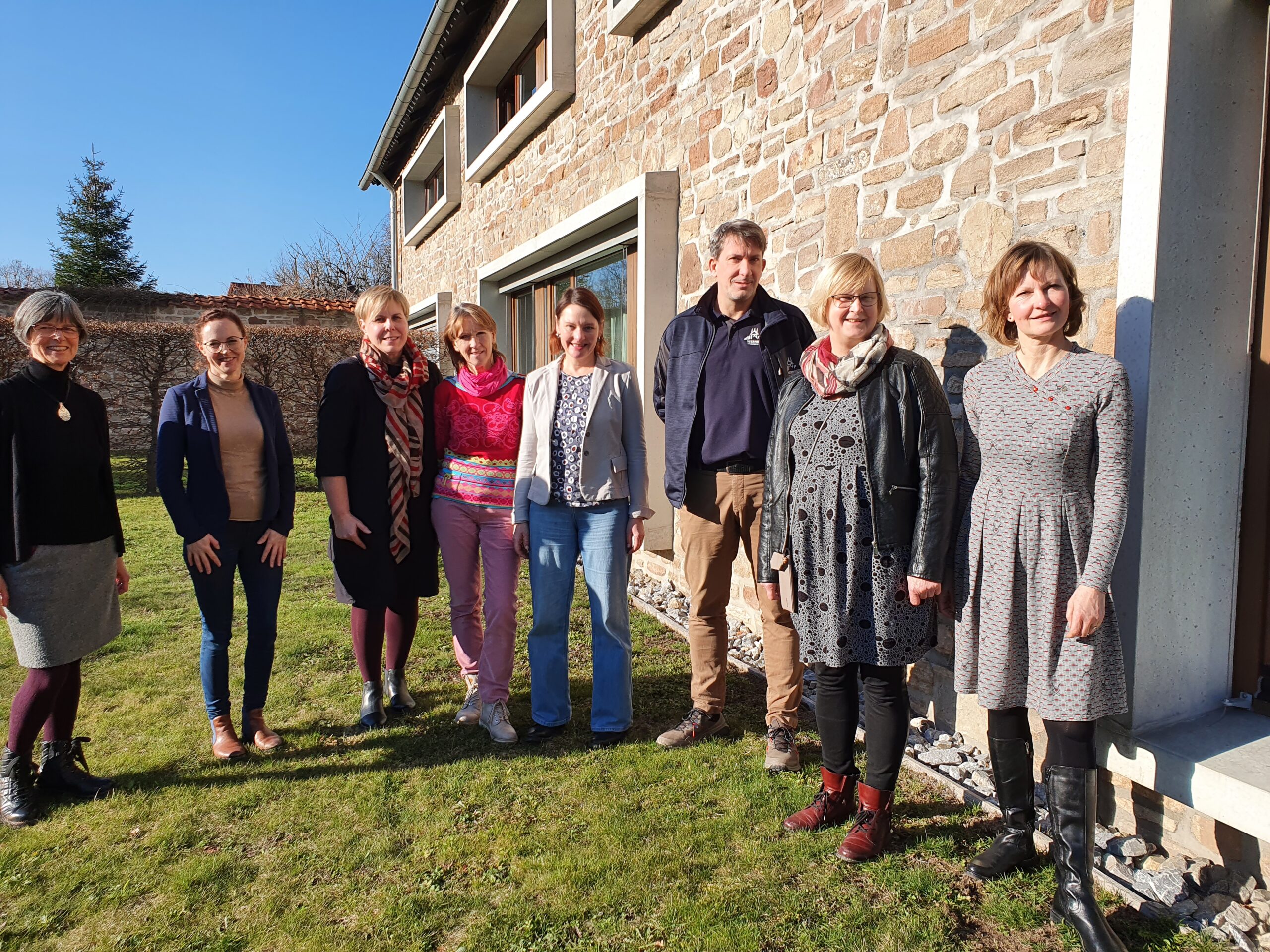
Kick-off meeting in Drübeck to plan the new children’s pilgrimage trail. © Harz Tourist Association
Between Goslar and Quedlinburg, in the northernmost low mountain range of the Harz, the recreational potential for body, mind and soul is excellently combined with cultural enjoyment at its best. Like a string of pearls, hikers experience a diverse monastery and church landscape over 95 km of monastery trail which runs partly along the former German internal border and includes outstanding UNESCO World Heritage Sites. The route passes through the beautiful cities of Goslar, Ilsenburg, Wernigerode and Quedlinburg. It is divided into six stages of between 10 and 20 km and no major differences in altitude, on which hikers can immerse themselves in the world of fragrant monastery gardens, Gothic cloisters, and fascinating churches, enjoy scenic views and relaxed hike in a cultural landscape steeped in history.
The Harz Monastery Route’s enormous possibilities for enjoyment are not limited to grown-up visitors. The route also offers many attractions for kids of all ages. Activities in the museums and events for all audiences are particularly popular during summer. At the monasteries of Michaelstein and Walkenried, for example, children can take part in holiday workshops and tailor-made guided tours led by the friendly and knowledgeable monk Conrad, who gently introduces them to monastery life and tell them fascinating stories from the distant past.
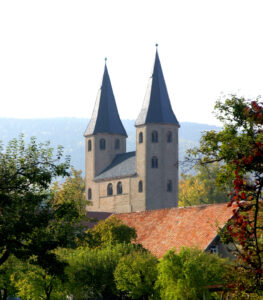
Drübeck Monastery Church, St Vitus. Photo: Ulrich Schrader. © Drübeck Monastery
The new children’s pilgrimage trail between Ilsenburg and Drübeck will be hiked for the first time on 29 June as part of FRH’s Run for Heritage campaign. The activity is organised by the Harz Tourist Association in cooperation with Drübeck Monastery, Ilsenburg Monastery, the Evangelical Elementary School of Ilsenburg, the city of Ilsenburg and its Tourism Department and the advice of Klosterland e.V.. The trail chosen for the children encompasses a 3,5 km stage that goes from Ilsenburg Monastery, originally the beginning of the Harz Monastery Trail, to Drübeck Monastery.
This guided tour aims to take children on a path of encounter, immersing them in the values of monastic life and in the exceptional landscape of the Harz Valley. The guided tour has the character of a short pilgrimage to give children an idea of what pilgrimage means. We will try to give some easy spiritual impulses that are understandable and comprehensible for children of young age. These basically refer to the conscious experience of nature as a gift. As we walk through nature, we can understand it as both a natural environment but also as God’s creation.
We will start in the monastery of Ilsenburg, where we will have breakfast all together in the refectory and the children will get to know simple rules of the Benedictine monks, for example what monks used to eat in former times and what kind of rules they had to follow. The children will get a backpack with a few items, for example a candle, a pilgrim badge, a snack, which they can keep after the activity. On their way, the children should be especially aware of nature with its sounds, colours and shapes. We will walk a short distance in silence, listening to the sounds we make ourselves and to the sounds outside. We will try the so called “pilgrims step”, which means two steps forward, one step back. Through this, we will slow down our pace to change our rhythm very consciously.
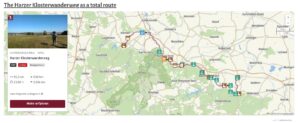
Complete 95km Harz Monastery Trail. Source: harzinfo.de
At the beginning, the children will be given the task of collecting two stones that seem special to them. They will carry one of the stones from one monastery to the other to put it down together as a ritual at the end of the tour. On the way, they will tell their neighbour what is special about their stone. The second stone will form a pile of stone at a beautiful place, which the children will build together. We will talk about the topic that we are all part of a community and everyone can contribute something to it. We build something, but we also move on, leaving the pile and finding new tasks. On the way we will also sing and symbolically eat and share food by passing grapes around. In Drübeck Monastery, we will light our candles in the church, lay down our findings and receive the final blessing. At the end the children will have lunch in the monastery garden.
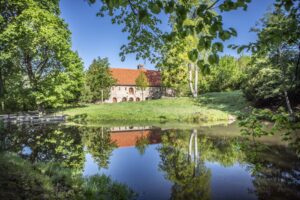
Ilsenburg monastery. © Norbert Perner
The starting point of the route, the Ilsenburg Monastery, is a Romanesque site on the ascent to the Brocken Mountain. The former Benedictine monastery was established between 1003 and 1018 and lies in the midst of a beautiful park landscape at the exit of the Ilse Valley. Parts of the basilica, consecrated in 1087, and valuable remains of its plaster floor from around 1200 are still preserved. Equally worth seeing are the rooms of the Romanesque enclosure, which have been restored in the meantime and are furnished with remarkably beautiful columns and capitals. Between 1648 and 1716, the monastery was the residence of the Wernigerode line of the Counts of Stolberg. The adjacent palace park was created in connection with the construction of the new palace from 1861 onwards and was modelled on English landscape gardens. The designs for the “palace garden” were made by Botho zu Stolberg-Wernigerode (1805-1882). The history-loving count had chosen Ilsenburg as his retirement home and initiated the restoration of the remains of the monastery buildings for the first time.
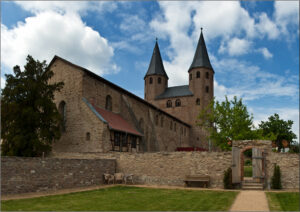
Kloster Drübeck. View from the college garden on Church St Vitus. Photo: Ulrich Schrader ©Kloster Druebeck
The earliest mention of the nuns’ convent Drübeck goes back to a document of Emperor Otto I, who donated land to the monastery in 960. The Benedictine nuns in Drübeck lived according to the strict rules of St Benedict of Nursia. The monastery Drübeck was a daughter foundation of the Corvey monastery. The Romanesque monastery church of St Vitus and the romantic late Baroque monastery gardens are impressive. Today the monastery is a conference and meeting place of the Protestant Church in Central Germany. The “House of silence” offers several religious and spiritual programmes and further training.
By Melanie Krilleke, Harz Tourism Association.





Follow us: